Hands on: Samsung's impressive new monitors from CES 2023
We're at CES 2023, and we got the opportunity to use two of Samsung's new displays -- the Odyssey Neo G9 and the 5K ViewFinity S9.
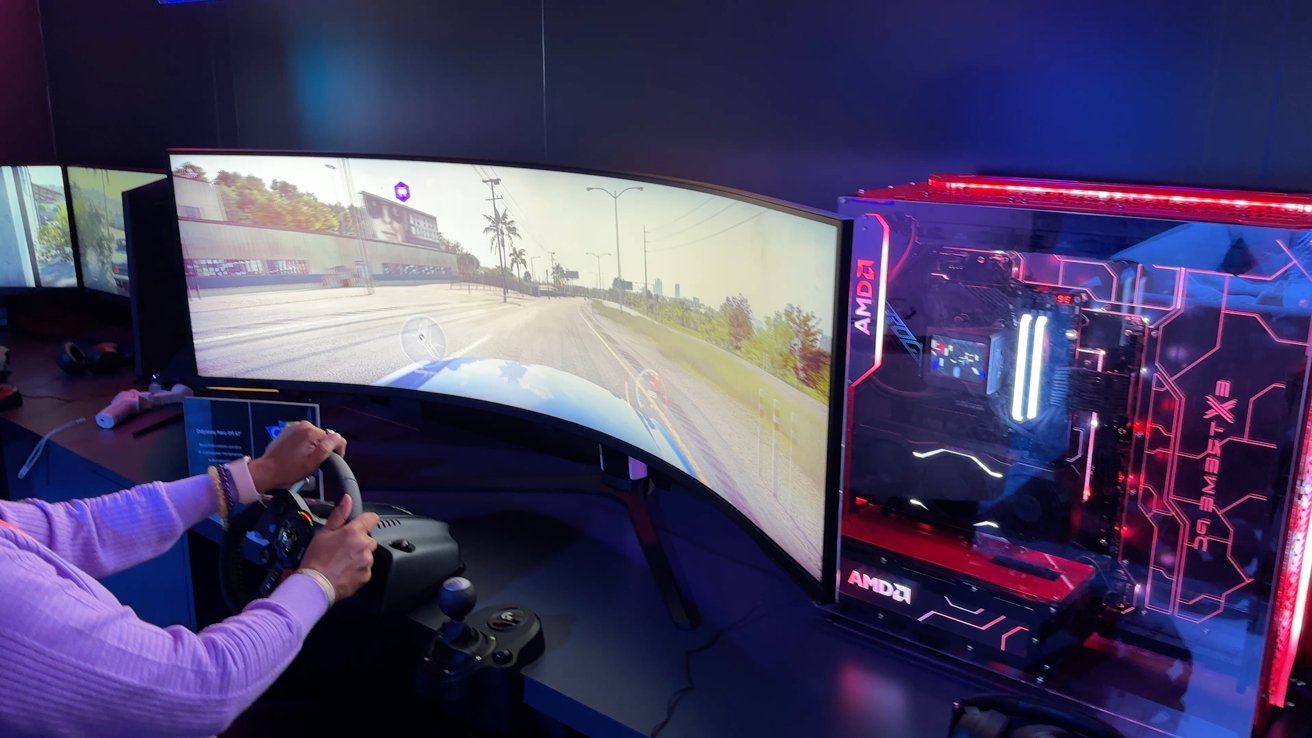
Samsung Neo G9
Samsung had plenty of displays and TV set up at the annual Las Vegas-based tech show but the ones we were most excited to check out were the Neo G9 and ViewFinity S9.
The Odyssey Neo G9 is a massive 7680 by 2160 57-inch curved gaming monitor with 240Hz and a 1ms response time. It supports HDR1000 and DisplayPort 2.1.
Using the monitor was surreal, filling your view. Samsung had a racing game pulled up to demo the display that was amazing to play as it brought you more into the gameplay. It was almost like using a VR headset without wearing one.
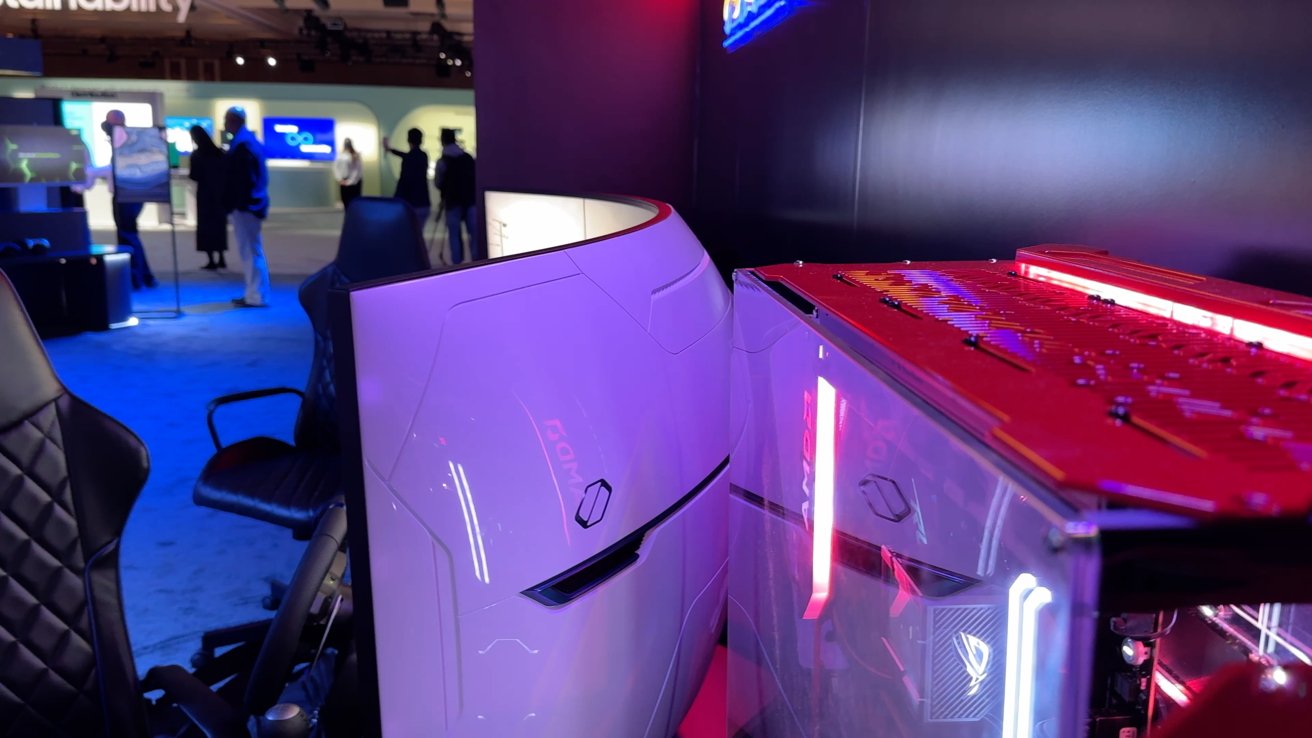
Side and back of the Neo G9
The monitor is thicker than your average monitor but is covered with a stylish white back.
Unfortunately, because of the high bandwidth needed to run the display the source needs to support DisplayPort 2.1 which the Mac currently does not. Macs aren't able to run 8K displays and this does have an 8K horizontal resolution.
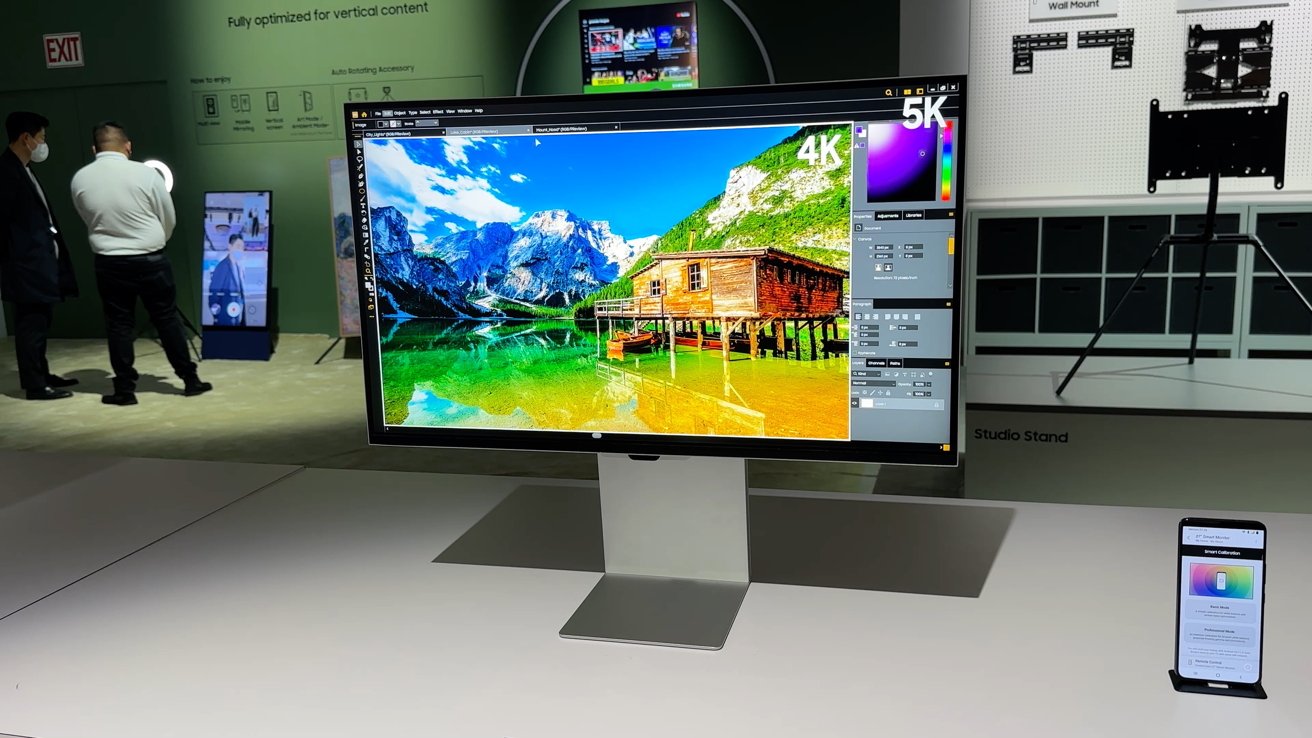
We also got a look at the ViewFinity S9 that Samsung seemingly designed to take on Apple's Studio Display.
The ViewFinity S9 is a 27-inch 5K display -- same as the Studio Display -- but Samsung tries to one-up Apple with several unique features.
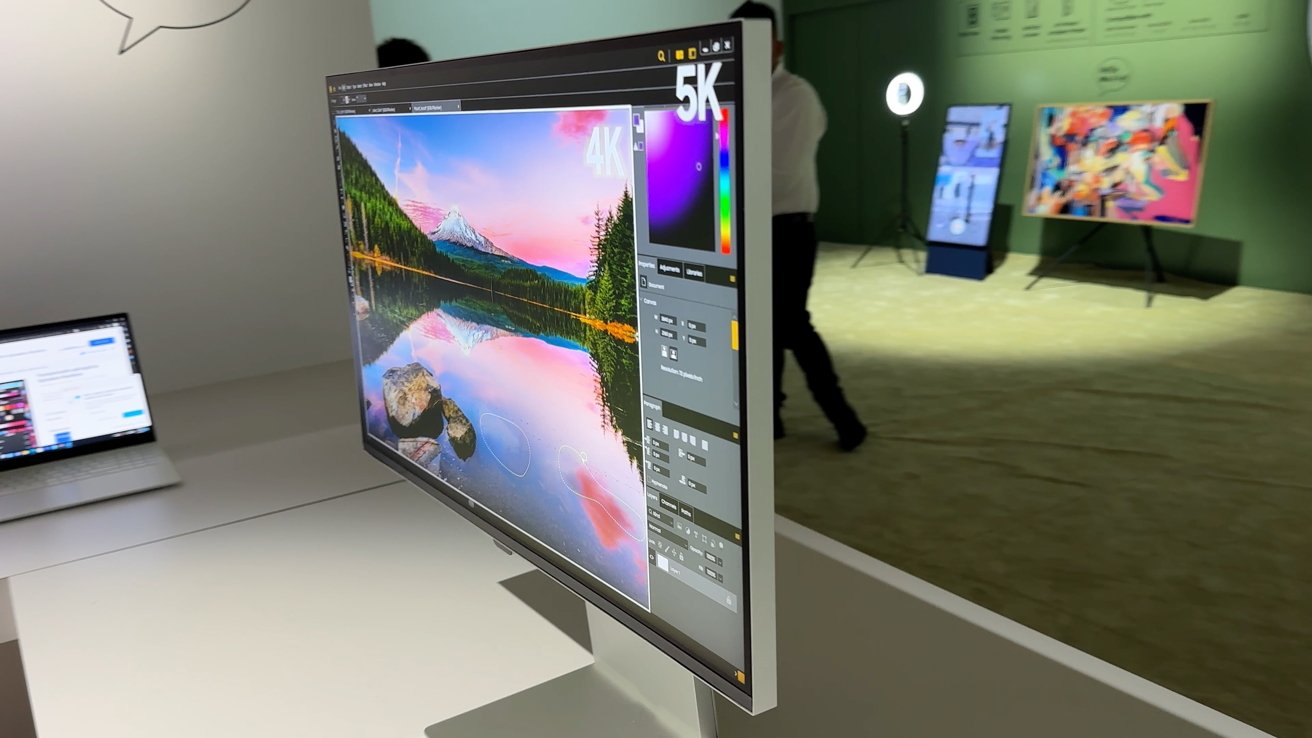
Side view
Samsung opted to include a matte display by default and it pays off. The screen looks incredible and has amazing viewing angles. Even with all the show lights the display looked great.
Hands-on it felt very sleek with minimal bezels. It comes with a 4K SlimFit camera that magnetically snaps onto the back of the display. We didn't get a chance to try out the new camera but 4K is beyond what Apple bundles with the Studio Display.
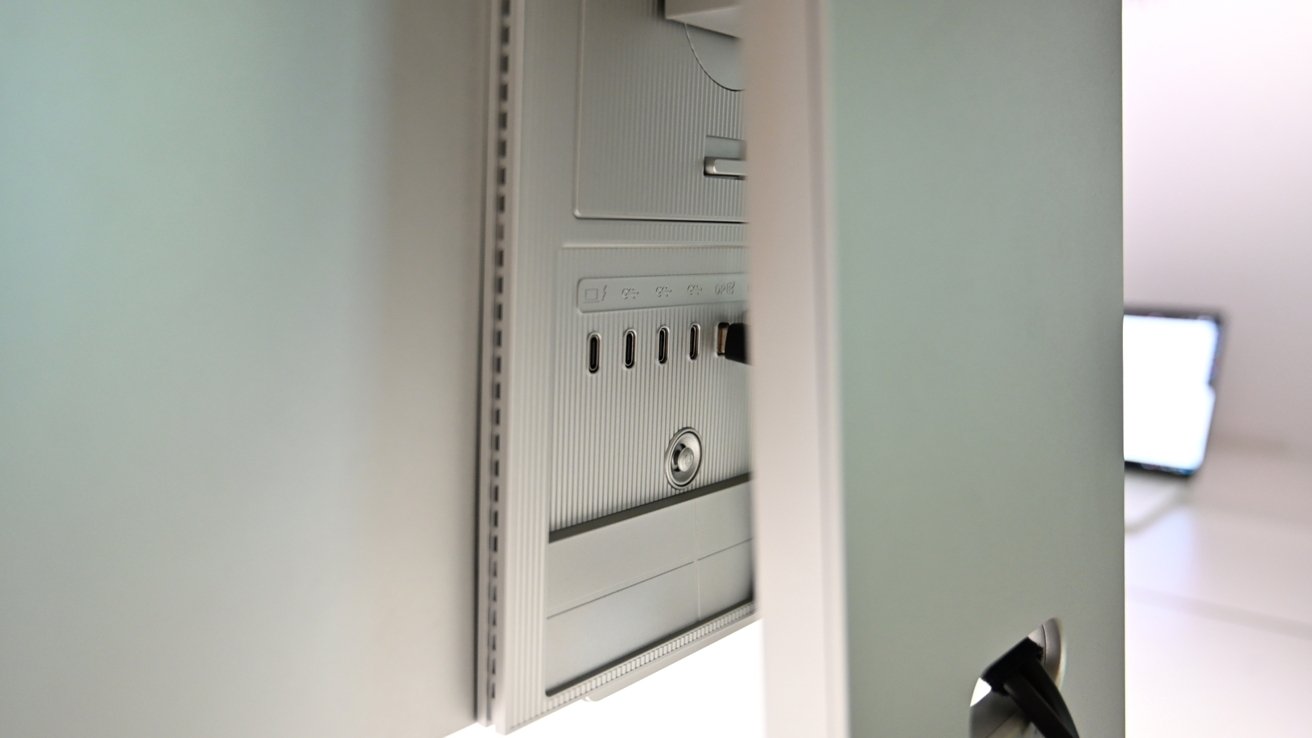
ViewFinity S9 ports
The ports are centrally located at the back, directly behind the stand. They were a little tight to get to but cables could easily be routed through the hole in the stand once connected.
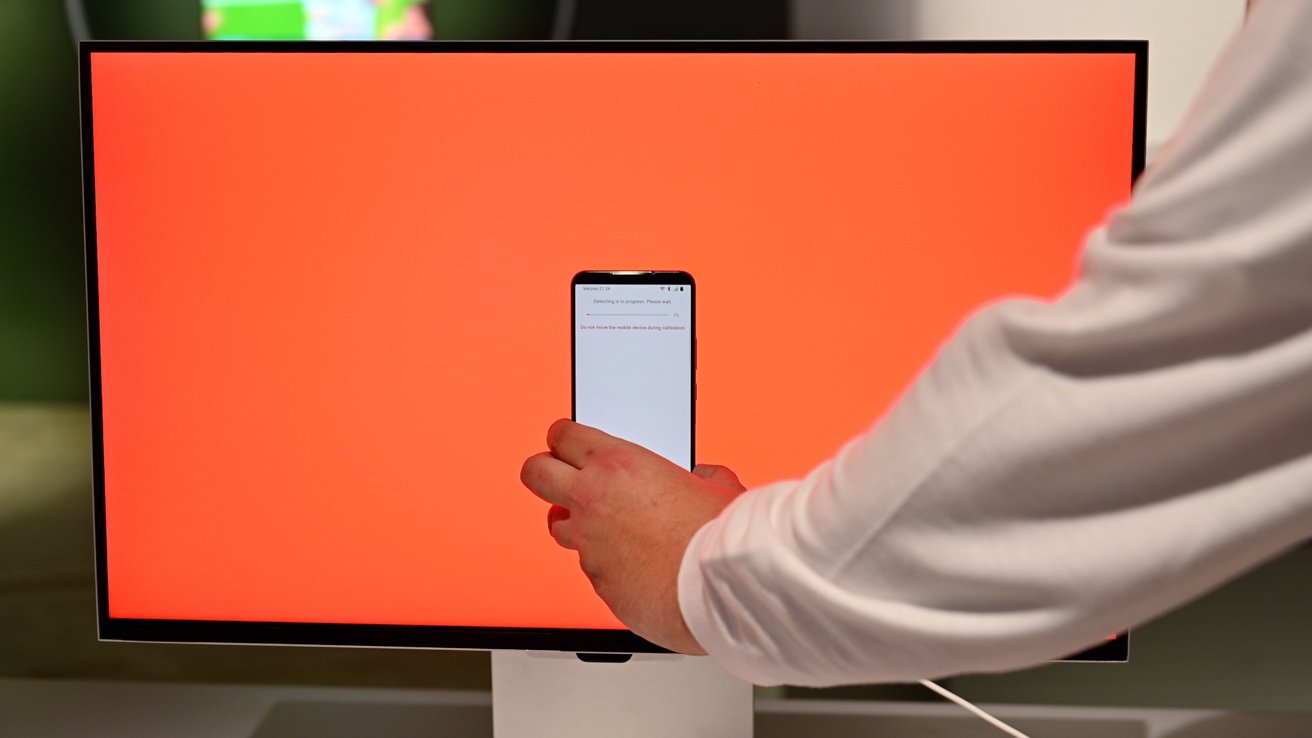
Calibrating the ViewFinity S9
One of the more unique features Samsung included here is smart calibration. Using the SmartThings app, we held the phone up to the display and a series of colors flashed before us. After a few moments, we got our results on the phone.
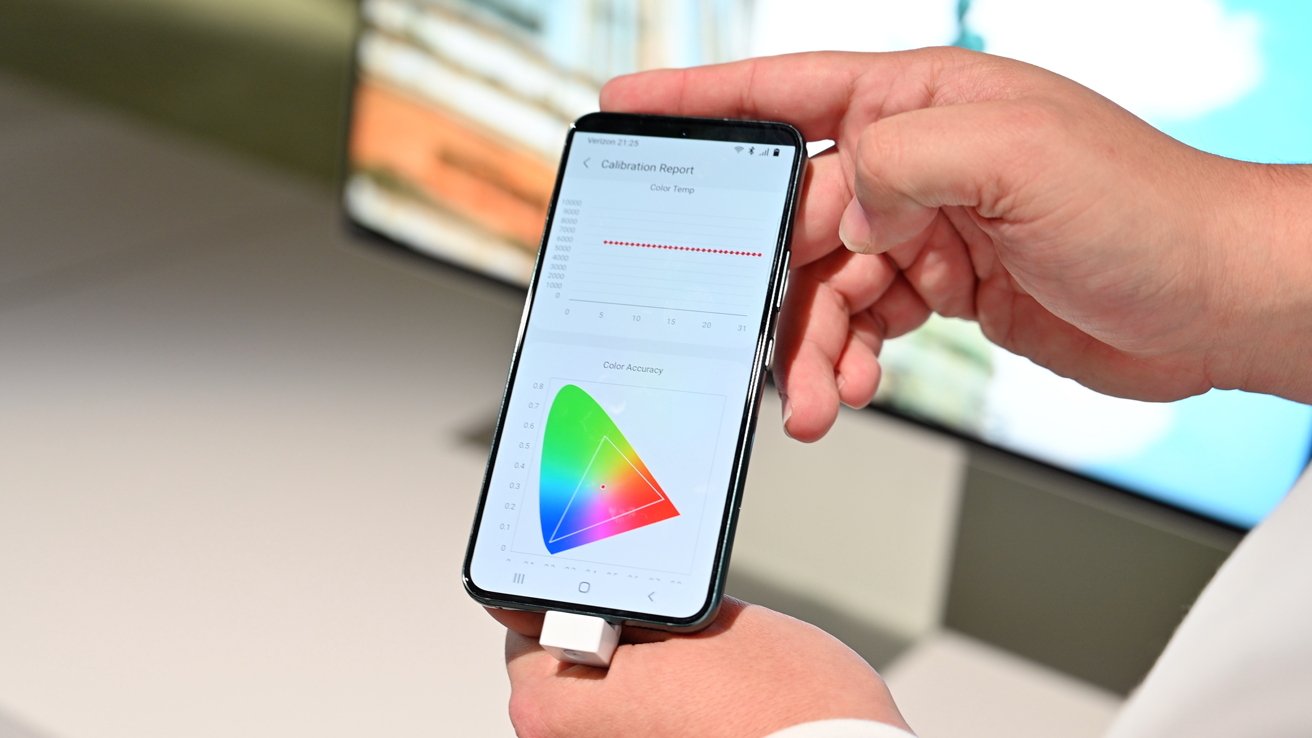
Calibration report
The results would show you exactly your calibration settings as you'd see from the factory. There's a before and after comparison at the end so you can see how much better the display looks.
AppleInsider will be covering the 2023 Consumer Electronics Show in person on January 2 through January 8 where we're expecting Wi-Fi 6e devices, HomeKit, Apple accessories, 8K monitors and more. Keep up with our coverage by downloading the AppleInsider app, and follow us on YouTube, Twitter @appleinsider and Facebook for live, late-breaking coverage. You can also check out our official Instagram account for exclusive photos throughout the event.
Read on AppleInsider

Samsung Neo G9
Samsung had plenty of displays and TV set up at the annual Las Vegas-based tech show but the ones we were most excited to check out were the Neo G9 and ViewFinity S9.
The Odyssey Neo G9 is a massive 7680 by 2160 57-inch curved gaming monitor with 240Hz and a 1ms response time. It supports HDR1000 and DisplayPort 2.1.
Using the monitor was surreal, filling your view. Samsung had a racing game pulled up to demo the display that was amazing to play as it brought you more into the gameplay. It was almost like using a VR headset without wearing one.

Side and back of the Neo G9
The monitor is thicker than your average monitor but is covered with a stylish white back.
Unfortunately, because of the high bandwidth needed to run the display the source needs to support DisplayPort 2.1 which the Mac currently does not. Macs aren't able to run 8K displays and this does have an 8K horizontal resolution.

We also got a look at the ViewFinity S9 that Samsung seemingly designed to take on Apple's Studio Display.
The ViewFinity S9 is a 27-inch 5K display -- same as the Studio Display -- but Samsung tries to one-up Apple with several unique features.

Side view
Samsung opted to include a matte display by default and it pays off. The screen looks incredible and has amazing viewing angles. Even with all the show lights the display looked great.
Hands-on it felt very sleek with minimal bezels. It comes with a 4K SlimFit camera that magnetically snaps onto the back of the display. We didn't get a chance to try out the new camera but 4K is beyond what Apple bundles with the Studio Display.

ViewFinity S9 ports
The ports are centrally located at the back, directly behind the stand. They were a little tight to get to but cables could easily be routed through the hole in the stand once connected.

Calibrating the ViewFinity S9
One of the more unique features Samsung included here is smart calibration. Using the SmartThings app, we held the phone up to the display and a series of colors flashed before us. After a few moments, we got our results on the phone.

Calibration report
The results would show you exactly your calibration settings as you'd see from the factory. There's a before and after comparison at the end so you can see how much better the display looks.
AppleInsider will be covering the 2023 Consumer Electronics Show in person on January 2 through January 8 where we're expecting Wi-Fi 6e devices, HomeKit, Apple accessories, 8K monitors and more. Keep up with our coverage by downloading the AppleInsider app, and follow us on YouTube, Twitter @appleinsider and Facebook for live, late-breaking coverage. You can also check out our official Instagram account for exclusive photos throughout the event.
Read on AppleInsider


Comments
On a similar note the 6K Dell. It would be great if there is one at CES and Appleinsider can have a look at it (and it’s webcam forehead!).
I was using it as a secondary monitor on my iMac. But when I would wake the iMac up, the Samsung would only wake about half the time. In those cases I had to unplug it, video and power, and plug it back in to get it to respond. And when it was working it had a habit of snapping to a hashed screen, random horizontal streaks with no visible picture. The only way to fix that was to do the same unplug and plug back in routine. After two days of trying to get it to work I gave up. I took it back and swapped it for an ASUS that has been solid.
Unlike Windows, which allows the installation of 3rd party display drivers that can sometimes address interoperability issues, if you run into an issue with a 3rd party monitor with your Mac you’re at the mercy of Apple to eventually provide a fix. The upside of course is that allowing 3rd party drivers in the OS can totally destabilize your system, so I prefer Apple’s model.
The one thing that I would like to see Apple adopt from several 3rd party monitors is to design its native stand mounting mechanism so it’s VESA compatible. Apple’s stands are lovely, but they’d be even lovelier if they were coupled to the monitor via a VESA mount, like on the higher end Dell models and the Samsung model featured in this article. This applies to both Apple’s standalone monitors and the iMacs. The slight tradeoff in aesthetics would be overshadowed by the huge improvement in mounting and viewing flexibility and ergonomics, plus being able to change the mount type post-purchase.
Yes, Apple allows buyers to choose a VESA option at the time of purchase, but there’s no easy/clean way to convert a standard mount to a VESA mount post-purchase. The standard non-height-adjustable stand on the Studio Display is something that I would learn to loath almost immediately. Luckily I got the VESA model so I don’t have to prop it up on the massive Programming Windows (Petzold) hardcover book like I do my iMac. Who ever said that having Windows programming experience had no residual value in the Mac world?